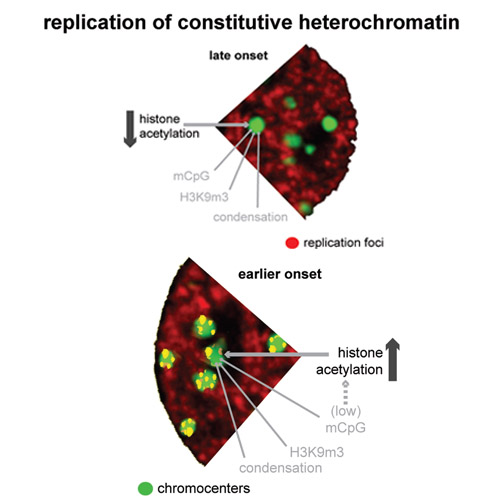Histone hypoacetylation is required to maintain late replication timing of constitutive heterochromatin
08-Sep-2011
Nucleic Acids Research, 2011, doi: 10.1093/nar/gkr723, published on 08.09.2011
Nucleic Acids Research, online article
Nucleic Acids Research, online article
The replication of the genome is a spatio-temporally highly organized process. Yet, its flexibility throughout development suggests that this process is not genetically regulated. However, the mechanisms and chromatin modifications controlling replication timing are still unclear. We made use of the prominent structure and defined heterochromatic landscape of pericentric regions as an example of late replicating constitutive heterochromatin. We manipulated the major chromatin markers of these regions, namely histone acetylation, DNA and histone methylation, as well as chromatin condensation and determined the effects of these altered chromatin states on replication timing. Here, we show that manipulation of DNA and histone methylation as well as acetylation levels caused large-scale heterochromatin decondensation. Histone demethylation and the concomitant decondensation, however, did not affect replication timing. In contrast, immuno-FISH and time-lapse analyses showed that lowering DNA methylation, as well as increasing histone acetylation, advanced the onset of heterochromatin replication. While dnmt1−/− cells showed increased histone acetylation at chromocenters, histone hyperacetylation did not induce DNA demethylation. Hence, we propose that histone hypoacetylation is required to maintain normal heterochromatin duplication dynamics. We speculate that a high histone acetylation level might increase the firing efficiency of origins and, concomitantly, advances the replication timing of distinct genomic regions.











